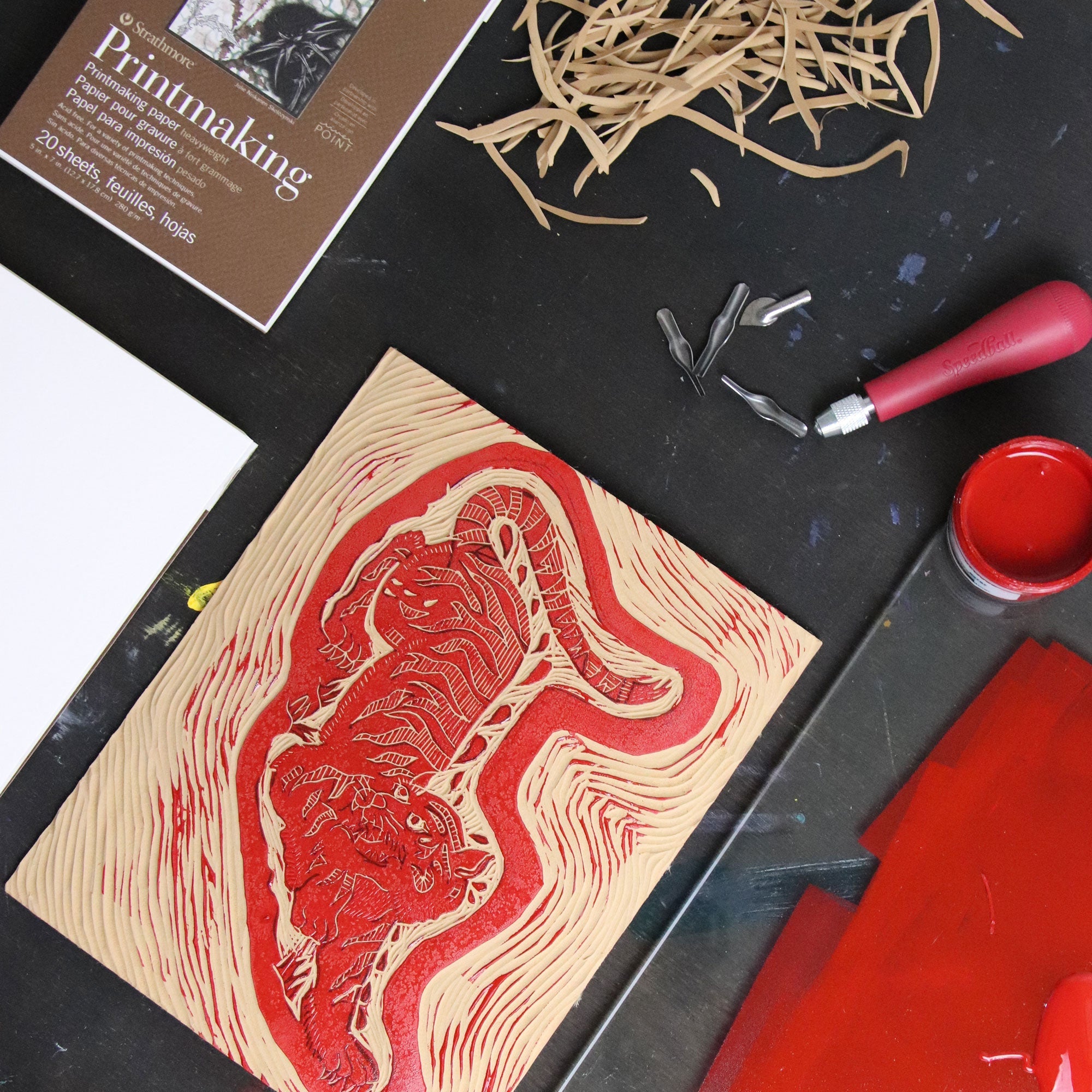
Historically a “niche” art medium, printmaking has seen a huge surge in popularity in the last couple of years, so we’ve put together an article for those who are looking for more information about printmaking – from the different types of printing techniques, to some resources to help you get started in this exciting medium, too!
What is Printmaking?
Printmaking is an artistic process created to transfer images from a block, plate or screen onto another surface, most often paper or fabric. Traditional printmaking techniques include relief printing such as woodcut, wood engraving, and lino block printing; intaglio printing like etching, engraving, lithography; and more recently, artists have expanded printmaking techniques to include screen printing. Read on to learn the differences between each printmaking method, as well as the materials and tools used for each process. Monotype is a printing process that usually only yields one good print from the plate (hence “mono”, meaning “single”).
Relief Printing
In relief printing, the artist draws a design on a smooth block of material such as wood or lino, and uses cutting tools to cut away the areas that they do not want to print. A raised surface of lines and shapes is left behind. Once the design is cut into the block, the remaining surface of the block is inked using a roller, ensuring that the ink is only on the uppermost surface of the surface. A sheet of paper is placed on top of the block and pressed against the surface; this can be done by hand or using a printing press. The most common types of relief processes (also called block printing) include woodcut, linocut, and wood-engraving.

Inks & Tools for Relief Printing
Intaglio Printing
In intaglio printing, the artist cuts an image into a metal plate, usually copper, zinc, or steel, either with a sharp instrument or a strong acid solution. When printing, the plate is thoroughly inked so that the ink penetrates and fills all the depressions, after which it is carefully wiped clean, first with a cloth and then with the hand, so that ink only remains in the lines/grooves created. A sheet of soft, dampened paper is pressed onto the plate with lots of pressure, as would be generated by a press, so that the paper is forced into the grooves, whereby the ink is removed onto the paper. Engraving, etching, drypoint, aquatint, and mezzotint are all considered intaglio printmaking processes.

Artist, illustrator, writer and printmaker Charles van Sandwyk gives a great introduction and overview of what the etching process looks like in our 2016 video Charles van Sandwyk: Illustrator, Writer, Wanderer.
Inks & Tools for Intaglio Printing
Screen Printing
Screen printing (also called silkscreen, a term coined when the screens were made out of fine silk) is the process of pressing ink through a stenciled mesh screen to create a printed design.
In screen printing, the artist creates their design and makes that design into a stencil. The stencil is applied to a mesh screen using one of a variety of techniques. The areas of the stencil that are cut away allow the ink to be pressed through the mesh, transferring the ink to the paper only in the areas that have been cut out of the stencil.






